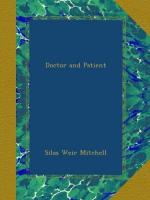Miss Bronte was mistress of this art. Blackmore has it also. In some writers it is so lightly managed as to approach the sketch, and is more suggestive than fully descriptive. To see what I mean read the first few chapters of “Miss Angel,” by Anna Thackeray. But a sketch by a trained and poetical observer is one thing; a sketch by a less gifted person is quite another. My pupil must be content with the simplest, most honest, unadorned record of things seen. Her training must look to this only.
What she should first seek to do is to be methodical and accurate and by and by fuller. If wise she will first limit herself to small scenes, and try to get notes of them somewhat in this fashion. She is, we suppose, on the bank of a stream. Her notes run as follows:
Date, time of day, place. Hills to either side and their character; a guess at their height; a river below, swift, broken, or placid; the place of the sun, behind, in front, or overhead. Then the nature of the trees and how the light falls on them or in them, according to their kind. Next come color of wave and bank and sky, with questions as to water-tints and their causes. Last of all, and here she must be simple and natural, what mood of mind does it all bring to her, for every landscape has its capacity to leave you with some general sense of its awe, its beauty, its sadness, or its joyfulness.
Try this place again at some other hour, or in a storm, or under early morning light, and make like notes. If she should go on at this pleasant work, and one day return to the same spot, she will wonder how much more she has now learned to see.
Trees she will find an enchanting study. Let her take a group of them and endeavor to say on paper what makes each species so peculiar. The form, color, and expression of the boles are to be noted. A reader may smile at the phrase “expression,” but look at a tattered old birch, or a silvery young beech-hole, “modest and maidenly, clean of limb,” or a lightning-scarred pine. Tree-study has advantages because it is always within reach. The axe has been so ruthlessly wielded that you must go far into the woods to get the best specimens of the pine, and the forests about our Maine lakes and in the Adirondacks have been sadly despoiled of their aristocrats. To see trees at their savage best one must go South, and seek the white-oaks of Carolina, the cypress of Florida, but the parks of Philadelphia and Baltimore afford splendid studies, and so also do the mountains




